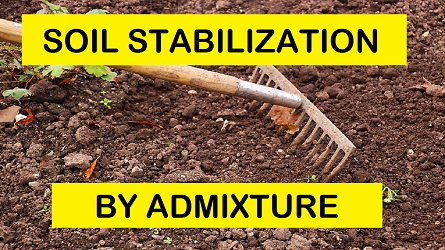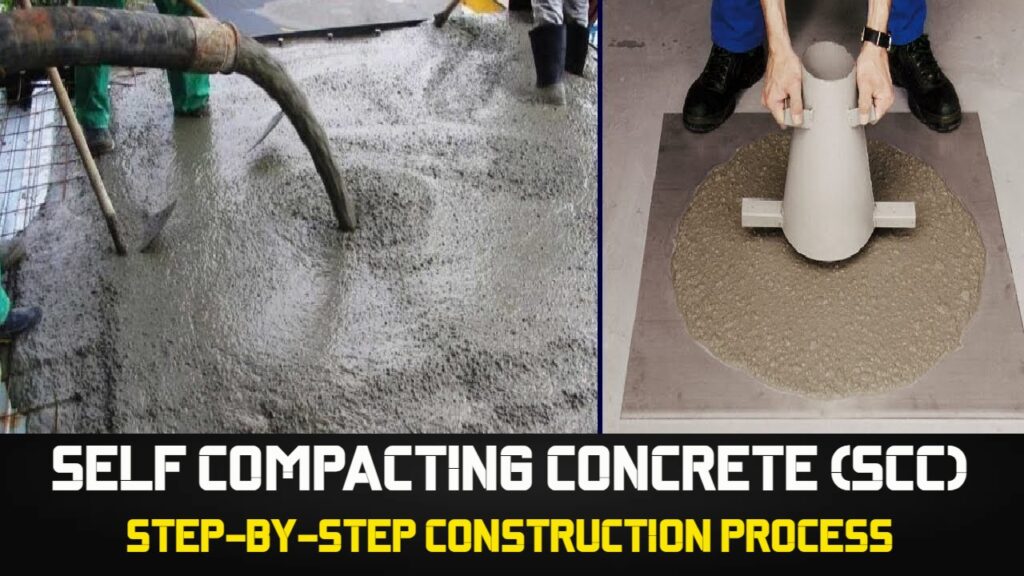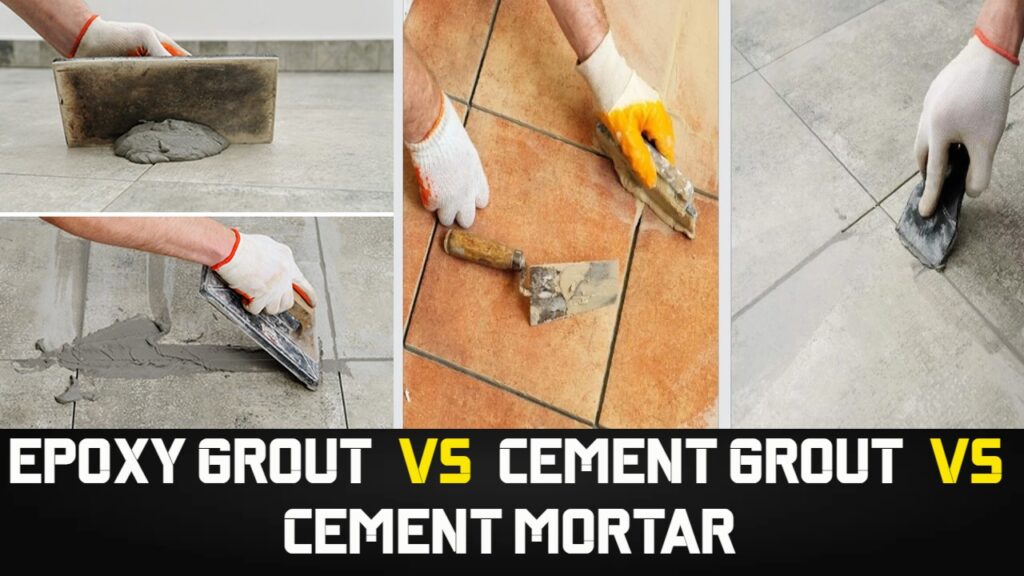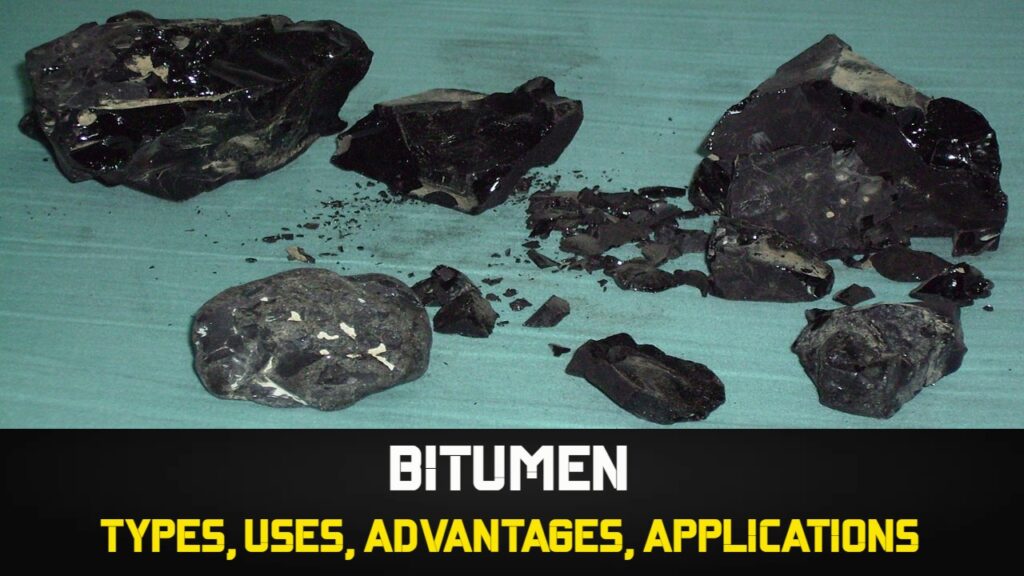Contents
Soil Stabilization By The Use Of Admixture
The physical properties of soils can often economically be improved by the use of admixtures. Some of the major widely used admixtures include lime, Portland cement, and Asphalt. The process of soil stabilization first involves mixing with the soil a suitable additive that changes its property and then compacting the admixture suitably. This method is applicable only for soils in Shallow Foundations or the base courses of roads, airfield pavements, etc.
Soil Lime Stabilization
Lime stabilization improves the strength, stiffness, and durability of fine-grained materials. In addition, lime is sometimes used to improve the properties of the fine-grained fraction of granular soils. Lime has been used as a stabilizer for soils in the base courses of payment systems, under concrete foundations, on embankment slopes, and canal linings.
Adding lime to soils produces a maximum density under a high optimum moisture content than in the untreated soil. Moreover, lime produces a decrease in the plasticity index.
Lime stabilization has been extensively used to decrease swelling potential and swelling pressures in clays. Ordinarily, the strength of wet clay is improved when a proper amount of lime is added. The improvement in strength is partly due to the decrease in plastic properties of the clay and partly to the pozzolanic reaction of lime with soil, which produces a cemented material that increases in strength with time. Lime-treated soils, in general, have greater strength and a higher modulus of elasticity than untreated soils.
Recommended percentages of lime for soil stabilization vary from 2 to 10 percent. For coarse soils such as clayey gravels, sandy soils with less than 50 percent silt clay fraction, the percent of lime vary from 2 to 5, whereas for soils with more than 50 percent silt clay fraction, the fraction of lime lies between 5 and 10. Lime is also used with fly ash. The fly ash may vary from 10 to 20 percent, and the percent of lime may lie between 3 and 7.
Also Read
- Water Content of Soil by Oven Drying Method
- Specific Gravity of Cement by Specific Gravity Bottle
- Sp. Gravity & Water Absorption Of Coarse Aggregate
- Sp. Gravity & Water Absorption of Fine Aggregates
Soil-Cement Stabilization
Soil-cement is the reaction product of an intimate mixture of pulverized soil and measured amounts of Portland cement and water, compacted to high density. As the cement hydrates, the mixture becomes hard, durable structural material. Hardened soil cement has the capacity to bridge over local weak points in a subgrade. When properly made, it does not soften when exposed to wetting and drying, or freezing and thawing cycles.
Portland cement and soil mixture at the proper moisture content has been used increasingly in recent years to stabilize soils in special situations. Probably the main use has been to build stabilized bases under concrete pavements for highways and airfields. Soil cement mixtures are also used to provide wave protection on earth dams. They are three categories of soil cement (Mitchell and Freitag, 1959). They are :
1. Normal soil cement usually contains 5 to 14 percent cement by weight and is used generally for stabilizing low plasticity soils and sandy soils.
2. Plastic soil cement has enough water to produce a wet consistency similar to mortar. This material is suitable for use of waterproof canal linings and for erosion protection on steep slopes where road-building equipment may not be used.
3. Cement-modified soil is a mix that generally contains less than 5 percent cement by volume. These forms are less rigid system than either of the other types, but improve the engineering properties of the soil and reduce the ability of the soil to expand by drawing in water.
The cement requirement depends on the gradation of the soil. A well-graded soil containing gravel, coarse sand, and fine sand with or without small amounts of silt or clay will require 5 percent or less cement by weight. Poorly graded sands with a minimal amount of silt will require about 9 percent by weight. The remaining sandy soils will generally require 7 percent. Non-plastic or moderately plastic silty soils generally require about 10 percent, and plastic clay soils require 13 percent or more.
Bituminous Soil Stabilization
Bituminous materials such as asphalt, tars, and pitches are used in various consistencies to improve the engineering properties of soils. Mixed with cohesive soils, bituminous materials improve the bearing capacity and soil strength at low moisture content. The purpose of incorporating bitumen into such soils is to waterproof them as a means to maintain low moisture content. Bituminous materials added to sand act as a cementing agent and produce a stronger, more coherent mass. The amount of bitumen added varies from 4 to 7 percent for cohesive materials and 4 to 10 percent for sandy materials. The primary use of bituminous materials is in road construction where it may be the primary ingredient for the surface course or be used in the subsurface and base courses for stabilizing soils.






